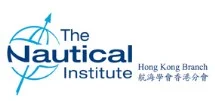article M Grey
archive > archive documents > conference 2017
Published by NIHK with the kind permission of Ship Management International
Alternative Viewpoint
‘One man and a dog’ by Michael Grey
When toiling over a hot word-processor gets too much for me, I like to get down to my nearest port and have a prowl around. These days of high-security and full application of the ISPS Code, it is all high fences and no admittance, but there are a few vantage points where you can actually see a few ships alongside. And the other day I was rewarded by the movement of a chemical tanker through the lock on her way to sea, which was a great treat for me, although it annoyed some of those on land, who were being held up by the maritime traffic.
She was a smart, beautifully kept ship of around 3500dwt (I checked when I returned home), only five years old and operating in the European trades. It was also notable that as she went into the lock and tied up for twenty minutes or so, the lines were being handled by a single seaman forward, and a single colleague down aft. Indeed, there were more port employees on the quayside handling the ropes, which comprised a line and a spring, at each end.
The two seamen knew what they were doing and there was nothing untoward happening as the ship entered the lock, settled down, and departed for sea. I was slightly worried watching the chap down aft as he left the poop to take up the pilot ladder, single handed and which was quite a struggle on his own, as he hung over the open rail. If it had been me, I would have yelled for some help.
Among my old photo albums inherited from my uncle, in British India all his working life, is a picture of him as Second Mate in the 1920s, leaving port on a ship which was much the same deadweight as the chemical tanker I had been watching. He is on the forecastle, photographed from a bigger company ship, alongside which they have been lying, and from which they are letting go, before going to sea. There are ten seamen on the forecastle, while three more can be glimpsed on the forward well-deck, attending to the spring. We can be assured that down aft, there will be about the same number, probably with the Chief Officer in charge.
There will clearly be a few more ropes to handle, but fundamentally, the operation will not have changed that much over the 80 or 90 years which have passed. On my uncle’s forecastle, there is a twin barrelled windlass and fairleads, although to be truthful, there are so many of them they can heave all the ropes in easily by hand and coil them down.
On the chemical tanker, circa 2014, the lines forward and aft are stored on the drums, so there is much less rope-handling required, although there are still winches and windlasses to be driven, heaving lines to be hove and the need to walk around from the winch controls to the ship’s side to see what is going on.
Doubtless the master and operator of the tanker would angrily protest that I had no business spying on them, and that their distribution of manpower on “stations for leaving harbour” was well tested and perfectly safe and adequate. You could probably also argue that my Uncle’s little general cargo ship, even festooned, as she was, with derricks, was perhaps over-generously manned. But the extreme lean-manning on the chemical tanker, it occurred to me at the time, seemed to be taking serious risks with life and limb, with but a single soul at each end of the ship, at one of the most labour-intensive evolutions that is needed in any ship’s operations.
The master, on the bridge with the pilot and with luck, a helmsman, could have seen if the man on the forecastle had got into trouble, had put his foot into a bight, or something frightful had happened with a broken line. I doubt that he could have seen his chap down aft, unless he had good CCTV fitted. And if the seaman struggling with the pilot ladder had missed his footing, or plunged into the lock, he would only have been alerted by the shouts of bystanders, unable to help on account of the security fence.
When the whole shipping industry is struggling with an almost total absence of reward, you might think it is the wrong time to be worrying about manning levels. But then you read of the accidents that still happen when insufficient numbers of people try and do a job and get overtaken by events. People have been maimed and injured in such a fashion and the IMO, no less, is conducting an exercise to try and make mooring and unmooring safer. P&I Clubs, the Marine Accident Investigation Branch and its equivalents overseas and the Confidential Hazardous Incident Reporting Programme frequently give us dire warnings of awful things that happen in exactly these circumstances.
They warn about cooks and mechanics being pressed into service, without adequate training, to undertake work that ought to only to be done by qualified people in mooring roles. And more times than we can remember, we come back to the sheer lack of hands, when hands are needed and something unexpected has happened.
It may be that I am terribly unfair. It was a bright, sunny and calm day. Perhaps all the other hands were having their lunch, or asleep. But I’m sorry, to be safe, they could have done more, and it was perfectly clear that they weren’t there when they were needed.

